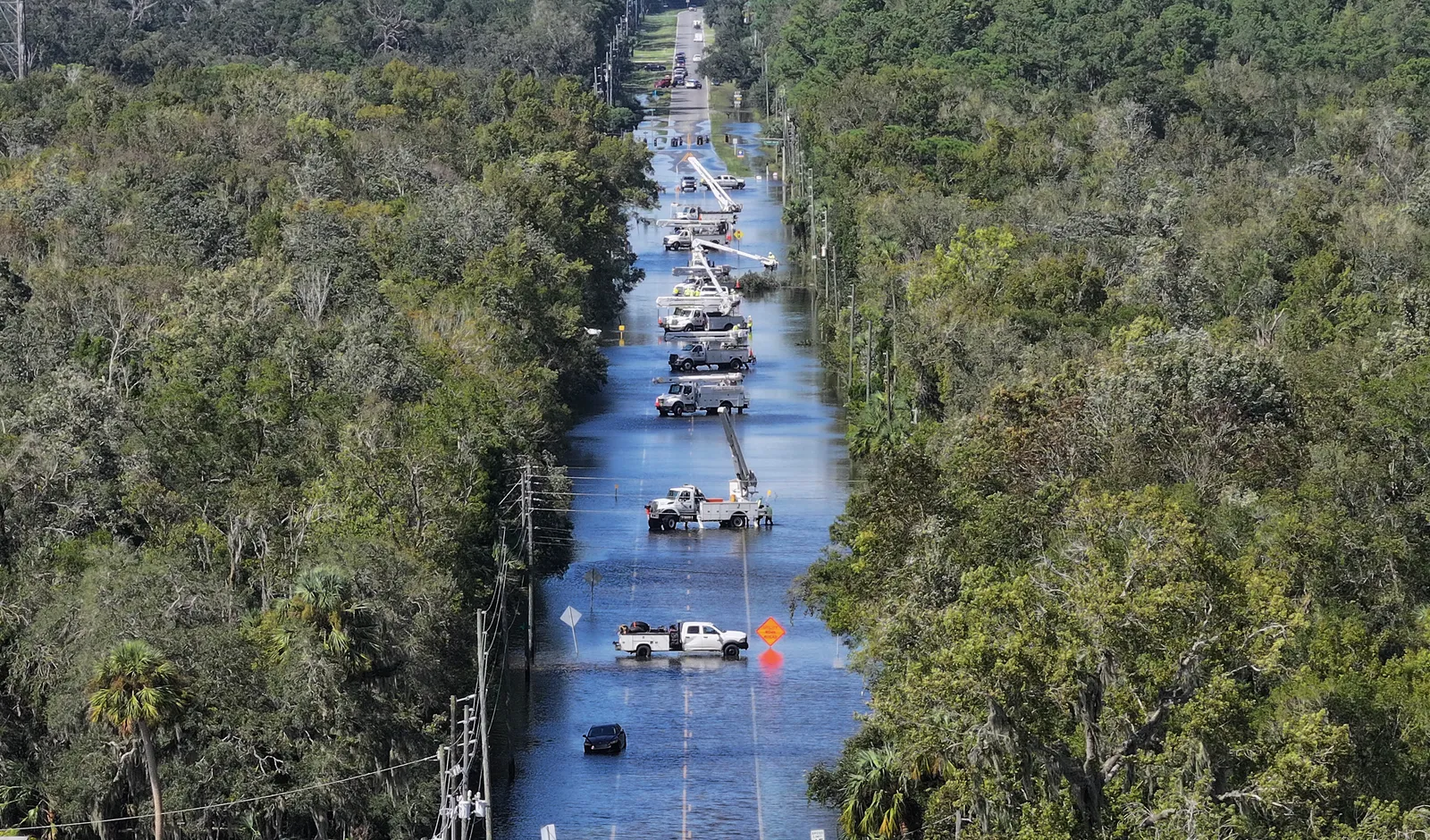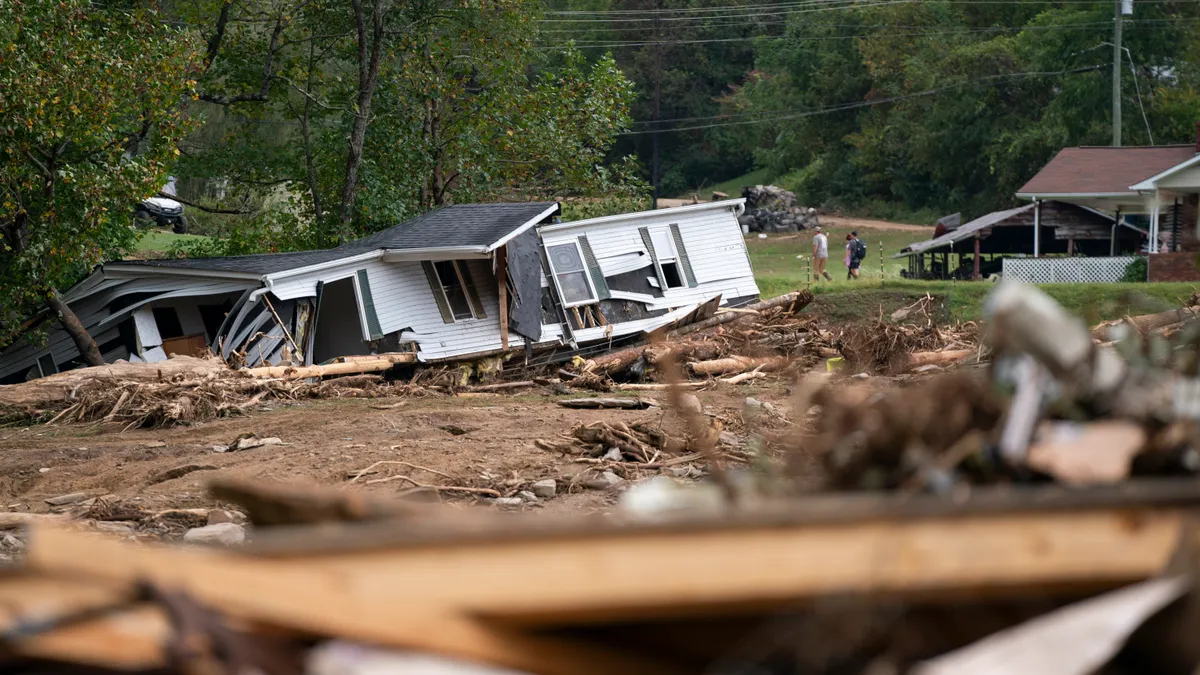Recovery efforts continue after Hurricane Helene knocked out power to about 6 million customers and devastated communities in the U.S. Southeast. In some areas served by rural cooperatives, utility leaders warn it could be weeks before service is restored.
“The consumers of electric cooperatives are in areas that are more remote, more rugged, more difficult to restore,” National Rural Electric Cooperative Association CEO Jim Matheson said in a call with reporters Tuesday afternoon.
Electric cooperative customers are about 1.25 million of the total outages, and more than half of those have had power restored. But about 500,000 cooperative customers remained without power on Tuesday afternoon, Matheson said.
In total, according to data from PowerOutage.us, about 1.3 million electric customers remained without power on Wednesday morning, almost a week after Helene struck Florida as a Category 4 storm. About 500,000 of the outages were in South Carolina; North Carolina and Georgia each had more than 300,000 outages remaining. Those totals include customers of cooperatives, investor-owned utilities and public power entities.
“This could have a long tail to it ... This could take days. This could take weeks, in some cases, because of the location and the amount of damage,” Matheson said. Some utilities will “rebuild from the ground up.”
Bolstering the cooperative restoration effort are about 6,500 mutual assistance workers from 15 states. So far, Matheson said he is not aware of any supply chain constraints hindering work.
“It is devastation that is hard to describe. I’ve never seen anything like it.”

Dennis Chastain
CEO of Georgia Electric Membership Corp.
“We're sending out 30 trailer truck loads of materials every day out of our supply cooperatives,” said Mike Couick, CEO of the Electric Cooperatives of South Carolina, a trade association.
“We don't have a shortage of materials. It's not a supply chain issue for us, but we're shipping out materials over the last three to four days that are about equivalent to between six months and a year's worth of material. So we're able to meet the needs so far,” he said.
South Carolina cooperatives face about 2,000 downed power poles, Couick said. Utilities serving customers along the Savannah River and adjacent to the Blue Ridge Mountains in the western portion of the state were particularly affected, he said.
“It's not a restoration, it's a rebuild. Every one of my co-ops in this state were affected,” Couick said.

In Georgia, the damage to cooperative power systems is primarily in the south-central and eastern portions of the state, according to Dennis Chastain, CEO of Georgia Electric Membership Corp., which represents the state’s member-owned utilities.
“It is devastation that is hard to describe,” Chastain said. “I've never seen anything like it.”
At peak, Georgia cooperatives had 350,000 customers without power. That figure is down to about 188,000, Chastain said on the Tuesday afternoon call. Crews from 14 other states are assisting the recovery, along with utilities from the western portion of Georgia, he said.
Recovery will be a “gargantuan effort” likely to stretch into next week, Chastain said. “Most of our systems are pretty small. So you can do a lot of work and get two to five customers back online. So it just, unfortunately, takes a lot of time.”
In western North Carolina, the devastation “has been heartbreaking,” said Thomas Golden, the CEO of EnergyUnited, the largest electric cooperative in the state.
“This is not just about power outages. It's about lives turned upside down, homes lost and communities facing weeks, if not months, of recovery,” Golden said.
Particularly in the western portion of North Carolina, he said, utilities are “facing a complete rebuild of electrical infrastructure.”
“Mudslides, flooding and downed trees have made entire communities inaccessible because roads have been washed away or blocked by debris,” Golden said. “And when [utility workers] do get through, they're not finding a few downed lines — they're finding entire spans of wire pulled down by trees, poles snapped in half and infrastructure washed away by floodwaters.”
Utility leaders say their storm responses are improving, but they also warn that only so much can be done to harden systems against the impacts of severe weather.
In Florida, Tri-County Electric Cooperative CEO Julius Hackett noted that his utility recently dealt with the impacts of Hurricane Idalia in 2023 and Hurricane Debby in August.
“When you're faced with three hurricanes in 14 months, you learn how to get pretty good at it,” he said. The utility has about 20,000 electric meters in its territory and still has more than 12,000 customers without service — but it had mustered 2,000 line workers and vegetation management professionals to restore power.
“We should have a big chunk of our service territory put back together by Friday, and then ... we'll have the remaining that we hope to get cleaned up over the weekend,” Hackett said.
A Category 4 storm has maximum sustained winds of up to 156 miles per hour, meaning there is little utilities can do to resist damage, said South Carolina’s Couick.
“Our infrastructure was already hardened, it just wasn’t hard enough to deal with Helene. ... When a Cat 4 comes on shore, there’s not much that is hard enough,” he said.





















